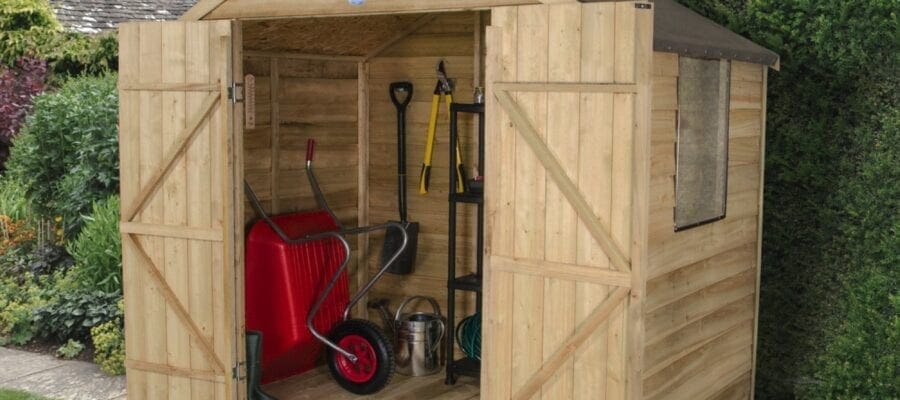A shed might be a simple structure but choosing one that exactly fits your requirements can be more complicated than you might think
Before buying, it’s essential that you spend time thinking carefully about what use you are going to make of the shed, both now and in the future, as these invaluable garden structures have a habit of being filled to capacity very quickly.
Many different styles and sizes are available, the most basic shed will give you storage space, but do you need something larger to accommodate all your garden equipment and have space for other activities?
If you propagate your own plants but do not have enough room in the garden for a greenhouse and a shed, why not look at one that combines a well lit potting area with a generously sized storage section.
Although size does matter, you should also consider a shed’s impact on its surroundings. The space it takes up should be appropriate to the overall size of your garden.
So it’s wise to carefully measure out how much space you have, using a tape measure rather than approximating it by eye.
Even if you’re buying a garden shed online, you may wish to view it within a garden centre first, letting you physically go inside the sheds they have on show and, while imagining the space taken up by shelves, workbenches etc., check whether there is enough headroom, light and capacity for your needs.
When you have decided on size and usage, ensure that access is adequate, and then the construction material needs consideration. Timber continues to be the most popular, easy to assemble, weather proof and lasting for many years, a timber shed’s rustic appearance fits naturally into most landscapes.
Metal sheds have progressed greatly in terms of quality, and offer increased security if you need to protect expensive gardening equipment. Modern metal sheds are much better specified nowadays with rot resistant powder coatings and stainless fittings. Wood effect cladding is also available to ape traditional timber.
Low maintenance plastic sheds should also be considered since they will not deteriorate through rust or rotting and don’t require painting. The latest plastics are extremely durable, panels fit together easily and wood effect cladding is again available.
The style of shed that you choose is not all subjective, there are practical considerations to take into account. Apex roofs for example offer most headroom in the centre but, if you prefer maximum headroom nearer the glazing, then a pent roof would be the correct choice.
Windows are a further consideration. Most sheds will have extensive glazing, either acrylic which is very durable or glass that has better light transmission.
But if you have valuable equipment inside, perhaps an expensive lawn mower or strimmer, you might choose a ‘security shed’ which has small high windows that are out of reach or none at all. These sheds will also be specified with pad bolts and other features that lessen the chance of a break-in.
Timber cladding can be one of four main styles. Overlap is the most common, similar to horizontal feather edge fencing. Over time some distortion may take place but this is usually the cheapest option.
In terms of appearance, tongue & groove cladding appeals to many people, it is also quite rigid with less chance of distortion. Shiplap is similar but its shape allows rain water to run off more effectively without getting into joints which will result in distortion and rotting.
Loglap cladding is no stronger, the timber is interlocked in the tongue & groove fashion, but your shed will look more like a log cabin than a traditional shed.
To ensure your timber shed’s longevity, the wood will normally be either dip or pressure treated.
Dip treatment is a less expensive process for the manufacturer, so these sheds are less expensive. But in the long run this might be a false economy since preservative will need to be applied at regular intervals.
Identified by a green hue, pressure treated timber that has been dried, placed in a vacuum and then impregnated under pressure with preservative. Sheds made from this type of timber will be guaranteed against rot for fifteen years while dip treated timber might have a ten year guarantee.
When all these factors are taking into account, your final decision will of course have to be weighed against the amount of money you have to spend, and so what might initially have seemed a simple purchase is in fact fraught with aesthetic, practical and financial complications.
For an extensive range of sheds, browse online at GardenSite.co.uk





